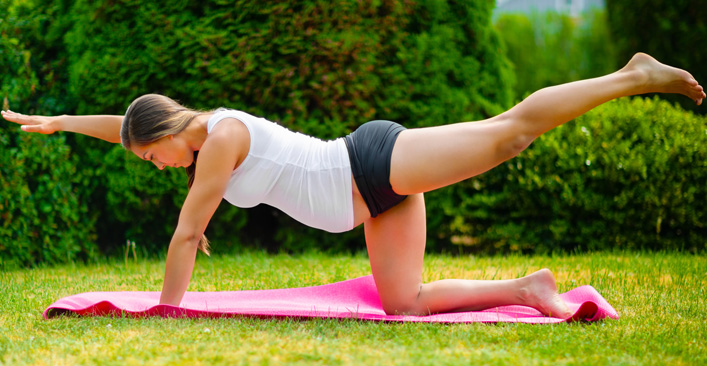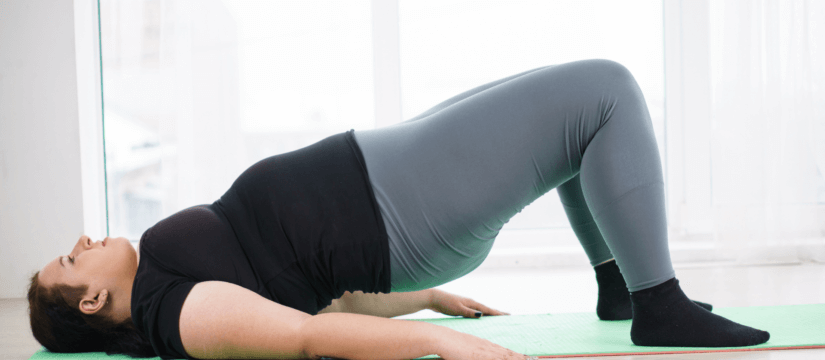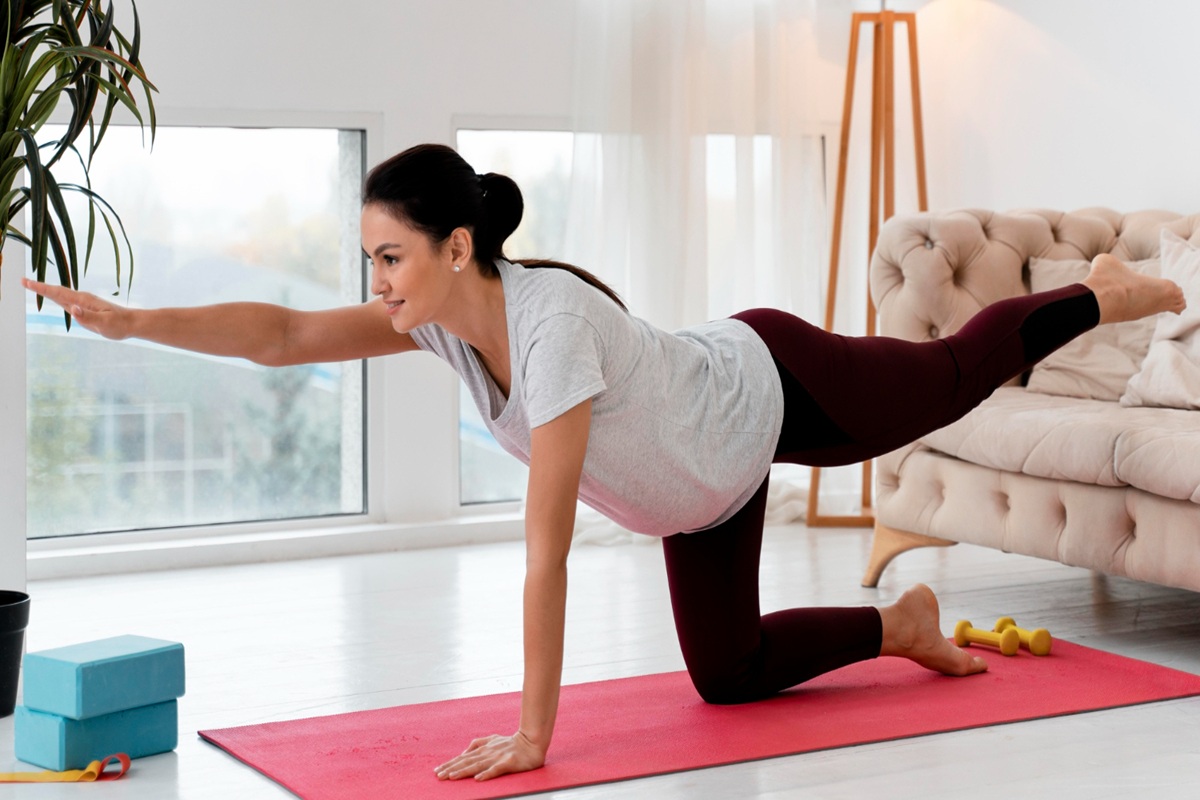Pregnancy and childbirth are powerful, life-changing experiences—but they also place a tremendous amount of stress on a woman’s body, particularly the pelvic floor and core muscles. After delivery, many new mothers face unexpected challenges such as back pain, abdominal weakness, urinary incontinence, or even a lingering sense of disconnect from their bodies. While these issues are common, they are not something women have to simply “live with.”
In recent years, pelvic floor and core-focused routines have gained recognition as essential components of postpartum recovery. These gentle yet effective exercises go far beyond aesthetics—they play a vital role in restoring strength, stability, and confidence. Whether you delivered vaginally or via C-section, intentionally working on these often-overlooked muscle groups can help you heal smarter, feel stronger, and regain control of your physical well-being.
Recommended: Can Kegels Help With Hemorrhoids?
In this blog, we’ll explore how strengthening the pelvic floor and core can accelerate recovery, prevent long-term complications, and help you reconnect with your body in the most empowering way.
Understanding the Postpartum Body
Pregnancy and childbirth bring about incredible changes in a woman’s body—some visible, many hidden. During these months, your body stretches, adjusts, and supports the growing life inside you. But after delivery, the focus shifts to healing and recovery, and this is where many women begin to truly feel the effects of pregnancy on their pelvic floor and core.

The pelvic floor is a group of muscles that act like a hammock at the base of your pelvis, supporting your uterus, bladder, and bowel. Throughout pregnancy, these muscles carry extra weight and are often stretched or weakened during labor—especially with vaginal births.
The core muscles, including the transverse abdominis, obliques, and rectus abdominis (the “six-pack” muscles), also go through significant strain. In many women, the abdominal muscles separate—a condition called diastasis recti—to make space for the growing baby. This separation can linger postpartum, leading to poor core strength, posture issues, and even back pain.
Recommended: Best Postpartum Gifts for Mom
In addition to these physical changes, hormonal shifts continue to affect the body after childbirth. Relaxin, a hormone that loosens ligaments for birth, can remain in the body for months, making joints less stable and increasing the risk of injury if recovery isn’t approached carefully.
What Is the Pelvic Floor & Why It Matters
The pelvic floor is a group of muscles and connective tissues that stretch like a supportive sling from the tailbone (coccyx) to the pubic bone. These muscles form the base of your core and play an essential role in many everyday functions—including bladder and bowel control, sexual function, organ support, and core stability.
During pregnancy, the pelvic floor bears the growing weight of the baby, and during delivery—especially vaginal birth—it often undergoes extreme stretching or even trauma. As a result, many women experience weakness or dysfunction in these muscles postpartum.
When the pelvic floor is weakened, it can lead to:
- Urinary leakage when laughing, sneezing, or exercising
- Pelvic organ prolapse, where organs like the bladder or uterus shift downward
- Lower back or pelvic pain
- Reduced sexual sensation or discomfort
But here’s the good news: just like any muscle group, the pelvic floor can be strengthened and retrained. Engaging in pelvic floor-focused exercises—like Kegels, deep breathing, and coordinated core movements—can restore strength, support recovery, and improve overall quality of life after childbirth.
Recommended: Can Kegels Cause Bleeding?
By taking care of your pelvic floor, you’re not just preventing discomfort or future complications—you’re laying the foundation for a strong, functional, and confident postpartum body.
Top Benefits of Pelvic Floor and Core Exercises
In the whirlwind of postpartum life, it’s easy to put your own healing on the back burner. But dedicating just a few minutes each day to pelvic floor and core exercises can lead to life-changing benefits for your body and well-being. These movements do far more than tone muscles—they help restore balance, strength, and confidence after childbirth.
Here are the top benefits of incorporating pelvic floor and core-focused routines into your postpartum recovery:
1. Improved Bladder and Bowel Control
Pregnancy and childbirth often weaken the pelvic floor, leading to leaks when sneezing, coughing, or laughing. Strengthening these muscles helps reduce or eliminate urinary incontinence and improves bowel function.
2. Faster Healing and Recovery
Core and pelvic floor exercises boost circulation to the pelvic region, promoting tissue healing and reducing postpartum swelling, soreness, and heaviness.
Recommended: Effective Mindfulness Practices for Reducing Female Stress and Low Libido
3. Reduced Risk of Pelvic Organ Prolapse

A weak pelvic floor may allow organs like the bladder, uterus, or rectum to shift downward. Gentle strengthening routines help support internal organs and prevent or manage prolapse.
4. Restored Core Strength and Posture
Postpartum core work (especially focusing on the deep core muscles) helps rebuild stability, close abdominal separation (diastasis recti), and reduce lower back pain from carrying or nursing your baby.
5. Enhanced Sexual Health and Sensation
Improved pelvic floor tone can enhance sexual pleasure, comfort, and confidence, especially if intercourse feels different or uncomfortable after birth.
6. Better Movement and Energy
A strong pelvic floor and core support your spine, hips, and pelvis—making daily activities feel easier, from lifting your baby to walking or getting out of bed.
7. Emotional Empowerment
Taking control of your recovery through intentional movement helps you feel stronger, more connected to your body, and more in control of your journey as a new mom.
Safe and Effective Postpartum Exercises to Start With
When you’re ready to begin moving your body again after birth, it’s important to start gently and intentionally. The focus in the early weeks should be on reconnecting with your breath, gently activating the deep core, and restoring pelvic floor function. These exercises are safe for most women postpartum—but always check with your healthcare provider before beginning any workout routine.
Recommended: How Effective is Pelvic Floor Therapy For Vaginismus?
Here are some safe and effective exercises to begin your recovery:
1. Diaphragmatic (Deep Belly) Breathing
This is the foundation of core and pelvic floor engagement.
How to do it:
- Lie on your back or sit upright.
- Inhale deeply through your nose, letting your belly expand.
- Exhale slowly through your mouth, gently pulling your belly button toward your spine.
- Repeat for 1–2 minutes.
Benefits: Relieves tension, supports core reconnection, and preps you for more advanced movements.
2. Pelvic Floor Activations (Kegels)
How to do it:
- While sitting or lying down, contract the muscles you’d use to stop the flow of urine.
- Hold for 3–5 seconds, then release for the same amount of time.
- Repeat 10 times, 2–3 sets a day.
Tip: Don’t hold your breath, squeeze your thighs, or tense your glutes.
3. Pelvic Tilts
How to do it:
- Lie on your back with knees bent and feet flat.
- Gently tilt your pelvis to flatten your lower back into the floor.
- Hold for a few seconds, then return to neutral.
- Do 10–15 reps.
Benefits: Strengthens deep core muscles and supports spinal alignment.
4. Heel Slides
How to do it:
- Lie on your back, knees bent.
- Engage your core, and slowly slide one heel out to straighten your leg, then back.
- Alternate legs, 10 reps per side.
Focus on: Keeping your pelvis still and breathing steadily.
Recommended: Best Freezer Meal For Postpartum
5. Glute Bridges
How to do it:
- Lie on your back with knees bent.
- Press your heels into the floor and lift your hips.
- Hold for 2–3 seconds, then lower down.
- Do 10–15 reps.
Benefits: Engages your glutes and hamstrings while supporting pelvic floor stability.
6. Bird-Dog (for later stages)

Best done a few weeks into recovery if cleared by your doctor.
How to do it:
- Start on all fours.
- Extend your right arm and left leg, keeping your core stable.
- Return and switch sides.
- Repeat for 6–10 reps per side.
Mistakes to Avoid in Postpartum Workouts
While it’s empowering to take charge of your recovery, postpartum exercise must be approached with care, patience, and body awareness. Rushing back into fitness or ignoring your body’s cues can slow down healing—or worse, lead to long-term issues like prolapse or injury.
Here are some common mistakes to avoid during your postpartum fitness journey:
1. Jumping Into Intense Workouts Too Soon
High-impact activities like running, crunches, or jumping can put stress on healing tissues.
What to do instead: Focus on gentle movements and core rehab in the first few months. Wait until your doctor clears you for high-intensity exercise.
Recommended: Holistic Tips for Boosting Female Libido Without Medication
2. Ignoring Pelvic Floor Dysfunction Symptoms
Leaking urine, pelvic heaviness, or pain during exercise aren’t “normal”—they’re signs your body needs more support.
What to do: Pause and see a pelvic floor therapist if you notice these symptoms.
3. Doing Traditional Ab Work (like Sit-ups or Planks) Too Early
These exercises can worsen diastasis recti (ab separation) and strain your core.
What to do instead: Start with deep core activation (like pelvic tilts and heel slides) to rebuild from the inside out.
4. Holding Your Breath During Movements

Breath-holding can create intra-abdominal pressure that stresses the pelvic floor.
Tip: Exhale during effort (like lifting or tightening muscles), and focus on relaxed breathing.
5. Comparing Your Recovery to Others
Every postpartum body is different. Social media “bounce-back” stories often skip the reality of slow, intentional healing.
What to remember: Your journey is valid. Listen to your body and celebrate small wins.
6. Skipping Rest and Recovery
Overtraining or ignoring fatigue can backfire. Your body is still healing—especially if you’re not sleeping well.
What to do: Balance movement with rest, hydration, and nourishment.
7. Not Seeking Professional Support When Needed
Trying to “push through” pain or dysfunction can delay healing.
What to do: Consult a women’s health physiotherapist or postpartum trainer if you’re unsure how to progress safely.
Recommended: 7 Best Supplements for Postpartum Hair Loss
By avoiding these common mistakes, you protect your body and create space for a stronger, more confident postpartum recovery. Think of your healing as a marathon—not a sprint—and give yourself the grace to move at your own pace.
Conclusion
Postpartum recovery is more than just getting back in shape—it’s about healing, rebuilding, and reconnecting with your body after the incredible journey of pregnancy and childbirth. Focusing on your pelvic floor and core isn’t just a fitness trend—it’s a vital step in supporting your body’s natural recovery, improving your long-term health, and helping you feel strong from the inside out.
Whether you’re weeks or months postpartum, remember that every small step you take—every breath, gentle movement, and mindful exercise—adds up. With patience, consistency, and compassion for yourself, you can regain strength, confidence, and a deeper appreciation for your body and all it’s accomplished.
You deserve a recovery that honors your body’s needs. Take your time, listen to your body, and know that healing is not just possible—it’s powerful.
